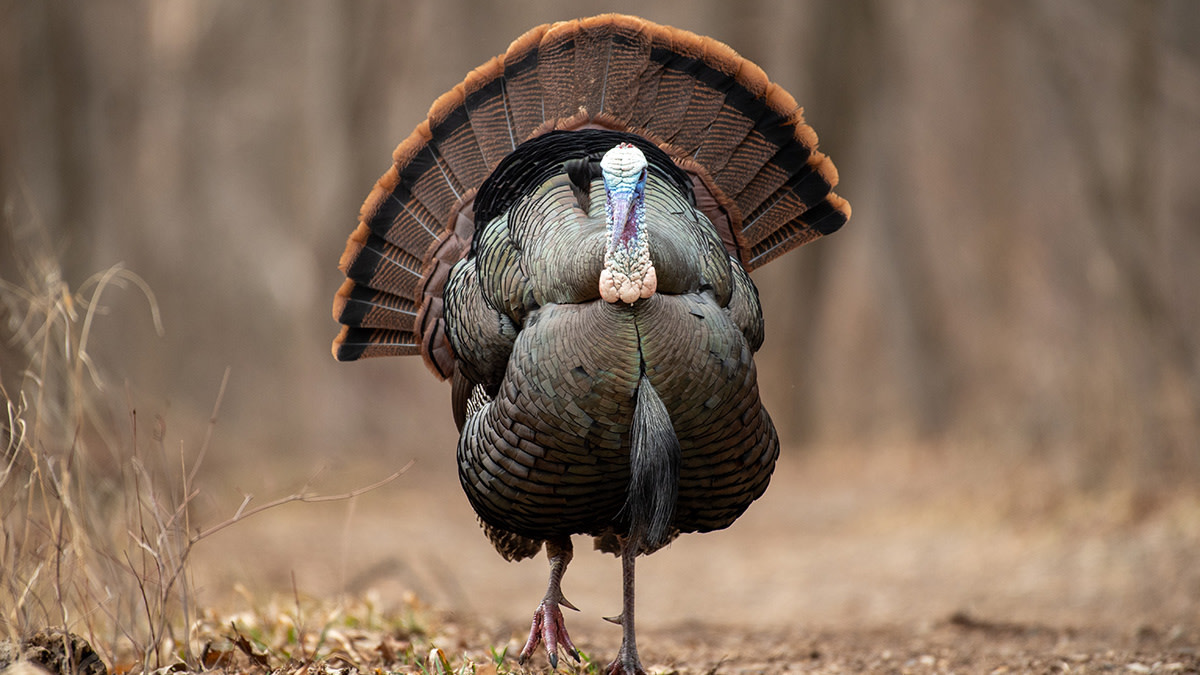
It feels weird to talk about turkey scouting. After all, a pile of longbeards are killed every spring by folks who set out from the truck in the morning with zero intel and no real plan. There isn’t a huge need for the big-country, run-and-gun crowd to engage in much turkey recon, but for plenty of turkey hunters, there is.
If you bowhunt from a blind, have plans to take a few youngsters out, or are relegated to small properties where the burnout factor could be high, scouting for turkeys makes sense. The best way to do it is to set up a few trail cameras in high-odds spots.
Turkeys in the Open Co-founder and president of Exodus Outdoor Gear, Chad Sylvester, recommends turkey scouters get familiar with their camera’s settings. “When you’re talking field edges and other openings, there is no better setting than time-lapse,” Sylvester said. “Set them to take pictures during certain windows of the day, and on a schedule that will allow you to see who is feeding, or strutting, in your spots.”
Time-lapse is perfect for this task because it’ll take pictures regardless of a triggering event. If a bird is strutting 200 feet away on the opposite side of your food plot or field, time-lapse imagery will show him even if he never gets close enough to trigger the camera.
These images are also viewable in chronological order, like a stop-motion film. This allows you to quickly watch each day to see when turkeys are there, how they get to your spot, and how they leave. All of those details are crucial for planning hunts.
Turkeys on Trails While a lot of hunters are drawn to open areas for turkeys, if you hunt pressured birds, you might want to think about travel routes. Like deer, longbeards (and the hens they lust after) tend to choose the easiest path from point A to B.
Logging roads, two tracks, and well-defined trails through the woods will cut it. So will high spines of ground between swamps, ridge tops, and anywhere you observe turkeys walking naturally. When it comes to these areas, or any areas really, it’s always a good idea to pay attention to the prevalence of sign, as well. The more tracks and droppings, the higher the likelihood you have of your camera recon paying off quickly.
Time-lapse mode won't cut it for monitoring these tighter quarter spots unless you like filling up your SD card with useless pictures of the woods. A better bet is to opt for either video mode or burst mode when trying to gather turkey intel on travel routes.
Video mode is my favorite because I can set the camera to take two-minute clips at a time, all while gathering sound. This means the lead hen often sets off the camera, and then whoever is on her tail will eventually walk through. You’ll also often hear other birds sounding off during these clips.
Burst mode is another option, but it is less effective. You'll probably miss birds even with your camera set to take up to nine pics per triggering event. It’s still a hell of a lot better than a one-shot setting with serious lag time between readiness, which is a mistake Sylvester warns against.
“Whether you’re running a 90-second video or burst mode, always check the trigger delay on your camera,” Sylvester said. “Cut it down to the quickest option, so your camera is ready to go almost instantly no matter how many times birds set it off. For most cameras, this will mean either a five-second, or a one-second delay.”
What to do Next Let’s say you’ve been running cameras for a few weeks and you’ve got a decent amount of videos and photos. The next step is to find patterns.
How often and when do turkeys walk through each spot you’re monitoring? Are you dealing with a morning spot, where they fly down, or a strutting zone that sees its most action during lunch hours? Are the birds consistent regardless of the weather, or do they only show up when the sun is shining and the wind is calm?
Pay attention to whether you’re capturing whole flocks, loner toms, or small packs of jakes, and consider whatever configuration of turkeys are on your ground. That information can guide you on where and when to hunt and what decoys to use.
But mostly, this type of turkey scouting allows you to be efficient and tip the odds in your favor for being in action no matter what. That’s the real goal for using trail cameras to pin down current turkey activity, and it works well.
Feature image via Matt Hansen.





